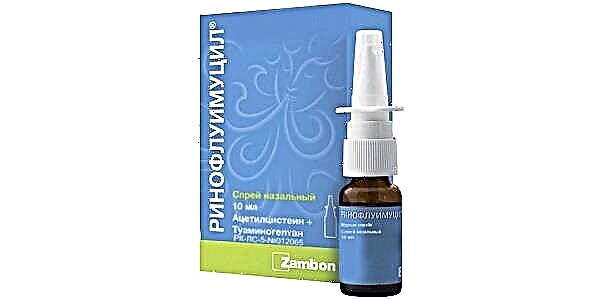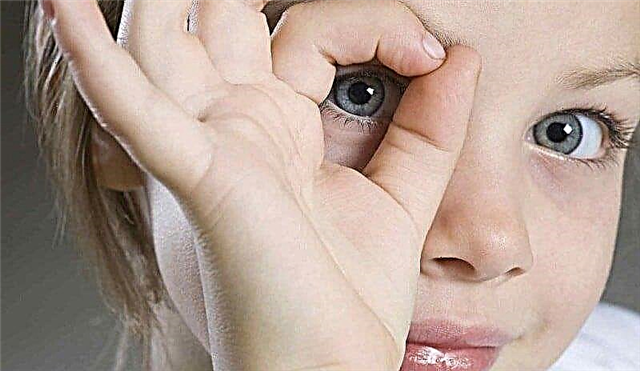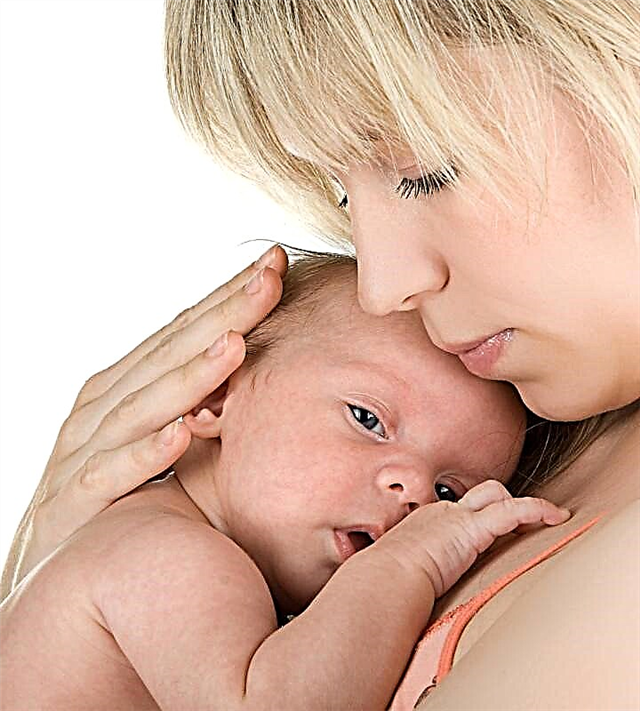
Various rashes on the body in babies are quite common. A variety of diseases can lead to the development of rashes, which we will talk about in our article.
Reasons for the appearance
A rash on the body of a child is an important symptom that speaks of a problem in the child's body. The rash can appear in both newborn babies and schoolchildren and adolescents. Localization of rashes is very diverse. Itchy elements bring the baby severe discomfort and significantly disrupt his well-being.


Main reasons:
- The leading cause of itching and rash on the baby's skin is allergic pathologies... They can develop at any age. Often the reason for the appearance of adverse skin symptoms in infants is various complementary foods introduced into the diet in the first year of life. Older children tend to react violently to honey and propolis, seafood and sea fish, citrus fruits and chocolate.
- In some cases, the development of a contact form of allergy leads contact of allergens directly on the skin. This situation is facilitated by the use of improperly selected children's cosmetics or laundry detergents. Chemical fragrances and dyes contained in such industrial products can have an aggressive effect on the delicate skin of a baby and lead to the appearance of adverse allergy symptoms.
Most allergic pathologies are accompanied by the development of severe itching. He can disturb the baby both day and night. This leads to the fact that the child becomes more irritable, more capricious. Babies may not attach well to the breast. In some cases, the child becomes drowsy and apathetic.
- Children's quarantine infections - also not an uncommon cause of itchy skin rashes in a baby. Measles, rubella, chickenpox, scarlet fever and many other infectious pathologies are provoking causes of various skin changes. The rash can spread to the hips, back, heels, head, back of the head, abdomen, chest, and other anatomical areas. The course of an infectious disease is usually severe and is accompanied by a high rise in body temperature.
- Violation of the rules of personal hygiene can also contribute to the appearance of rashes on the baby's skin. In this case, they most often appear on the palms and feet, under the arms, behind the ears. Quite often, such rashes appear in the smallest children who are not yet accustomed to following the rules of personal hygiene. Itching in such cases may not always be present.


- Itchy red small spots on the skin of a child may appear and after being bitten by various insects. This happens mainly in the warm season when insects are active. The majority of bites are usually found on open areas of the body. Babies living near forests or in rural areas have a higher risk of these skin elements.
- Characteristic rashes on the skin can also lead to some viral diseases... So, infectious mononucleosis is a fairly common cause of a rash on the child's skin. Usually, the appearance of rashes is accompanied by a pronounced symptom of intoxication. A sick baby feels very bad, his appetite decreases and his sleep is disturbed. Treatment of infectious mononucleosis requires the selection of a complex of individual therapy.


- Scabies is an infectious disease, accompanied by the appearance of a small rash on the skin. Usually it is localized in areas with high humidity or in the area of skin folds. The palms, groin and abdomen are favorite places for localizing scabies mites. This disease is manifested by the presence of many small red spots on the skin, which are very itchy, and bring the baby severe discomfort.

- In some cases, the appearance of a skin rash is a symptom of very life-threatening diseases. These pathologies include meningitis. Some forms of this disease cause multiple purple rashes on the child's skin. This symptom is extremely unfavorable. Meningitis is treated only in a hospital setting.
- Skin rashes in newborns and babies can develop in some other situations. These include excessive overheating and wrapping the baby in the warm season. This contributes to the violation of thermoregulation, which ultimately manifests itself in the child with the appearance of symptoms of prickly heat. These manifestations occur on the baby's skin in places of direct contact with clothing.
- In young patients, the development of whitish rashes on the skin can lead toxic erythema. This pathological condition is characterized by the appearance on the skin of a large number of white skin elements that are quite close to each other. With the development of the disease, such rashes can already cover the entire body of the baby. Scientists have not yet established a single reason for the development of this pathological condition in children.


- During adolescence, children may develop different types of symptoms on their face, neck, chest and upper back. pustular eruptions... There is pus inside these skin lesions. When pressed, it easily flows out. The appearance of such pustules is associated with a change in hormonal levels, which manifests itself in adolescents during puberty. To eliminate adverse symptoms, the correct selection of medical cosmetics is required, and in some cases also the intake of medications inside.
- The development of rashes in a baby can lead and neurodermatitis... This condition is accompanied by the appearance of a rash in the folds of the arms and legs, as well as in the face. This disease has predominantly neurological causes. The appearance of a rash is accompanied, as a rule, by severe itching. A whole range of different medicines is used to treat these adverse symptoms.


- Various subspecies can also lead to the appearance of rash elements on the skin in babies. herpes viruses... They can cause a roseola rash. The clinical signs of this infection in many cases duplicate those of the common fever that often occurs in babies. The course of the pathology, as a rule, is severe and is accompanied by a strong rise in body temperature, the values of which can even reach 40 degrees.
- Fungi that colonize the skin, can also cause the development of rashes. In this case, the rash appears on almost all parts of the body. Most of all, pathogenic fungi like to dwell in the scalp, on the nails, and also in the places of skin folds. Excessive sweating only creates more favorable conditions for the reproduction of fungal pathogenic flora. The development of adverse symptoms is usually gradual.
- Fungal pathologies are most often found in babies who have signs of immunodeficiency conditions... Also at risk for the development of fungal rash are children suffering from diabetes mellitus and other metabolic diseases. To eliminate the unfavorable symptoms of a fungal infection, a treatment complex is required, including the use of antifungal drugs.


Symptoms
The appearance of the rash can be very different. Quite often, numerous spots appear on the child's skin. They can be red or pink in color. Usually they reach 5-8 mm in size.
Allergic spots usually itches a lot and spreads almost all over the body. A large accumulation of skin elements is located on the back, neck, feet, elbows and other parts of the body. An allergic rash is usually quite small and itchy. The appearance of these rashes is directly related to the ingestion of an allergen into the child's body.
Many infectious diseases are manifested by the appearance of blisters on the baby's skin. This is how chickenpox usually proceeds. With this disease, the child develops numerous blisters that cover almost all of the skin. They usually contain a yellow or bloody liquid inside. The loose elements can persist for 5-7 days, and then gradually disappear completely.


A rash on the baby's skin can also manifest itself with various vesicles. These are relatively large bubbles filled with serous fluid inside. The wall of such formations is usually dense, but can crack when touched. In this case, the liquid flows out, and a bleeding wound remains in place of such an element. These manifestations are often found when the skin is infected with some pathogenic types of staphylococci.
The appearance on the skin of infants of bright red areas that can itch a lot is a sign development of diaper dermatitis. Quite often, wearing the wrong diapers leads to this situation. The development of an allergic reaction can be facilitated by the chemical components of the absorbent layer, which is in direct contact with the child's groin area. The appearance of bright spots in the groin, buttocks and thighs of the breast can be a characteristic symptom of diaper dermatitis.
Skin rashes rarely become an isolated symptom. The general condition of the sick baby is also deteriorating. His appetite decreases and his mood changes. The child becomes more moody, refuses to play with his favorite toys.


Severe itching leads to the fact that the baby's nervousness increases. Many infectious diseases develop in a child severe intoxication syndrome. A sick baby's body temperature rises. Fever or chills may appear at its height.
The child begins to have a severe headache, dizziness and general weakness may develop. The skin becomes dry and pale, and is usually cold to the touch.


Diagnostics
Only the attending physician can determine the specific pathology. To do this, you should definitely show the child to the doctor if any skin rashes appear. Pediatricians are involved in the treatment of infectious diseases in babies. If the pathology is of fungal or bacterial origin, then pediatric dermatologists also join the treatment.
To establish the correct diagnosis requires the mandatory conduct of a number of analyzes. A complete blood count can detect any signs of bacterial and viral infections. An increase in ESR indicates the presence of inflammation in the child's body. A large number of neutrophils indicates that an allergic reaction or bacterial infection may have caused the rash on the skin.

To establish the causative agent of the disease and carry out differential diagnostics, in some cases, collection of biological material from the skin. This is required for scraping. The resulting material is sent to the laboratory, where laboratory doctors conduct a thorough study of it and identify the causative agents of skin diseases.
In some difficult cases of diagnosis, more accurate tests are also required - PCR or ELISA. These studies are necessary to establish a number of microbes that cannot be detected by any other methods or laboratory tests. The biological material for such examinations is venous blood.
By determining specific antibodies, a variety of childhood infections are diagnosed.


How to treat?
The most important condition for the correct treatment is to establish the correct diagnosis. The selection of a therapy regimen is carried out individually, taking into account the reason that caused the child to develop adverse symptoms. Various antihistamines are used to treat allergic rashes. They can be used as ointments, creams, or tablets. These tools include "Claritin", "Suprastin", "Zyrtec" and others.
The duration of taking antihistamines is usually 7-10 days. They are appointed, as a rule, 1-2 times a day. After taking the first doses of medicines, the baby begins to feel much better. It reduces itching, improves mood and sleep. For course use, other groups of drugs can also be used that are well combined with antihistamines.
You can also use to treat itchy rashes lotions with medicinal herbs. Chamomile, calendula, string are suitable for this. These herbs should be brewed according to the package instructions.
They should be used until the skin rashes are completely eliminated. Also, these herbs are suitable for the prevention of the formation of various rashes on the skin.

If a staphylococcal or streptococcal infection has led to the appearance on the baby's skin, then in this case it is already required the appointment of antibiotics. Penicillins, macrolides and cephalosporins of the latest generations cope most successfully with this pathogenic flora. These funds can be used both in the form of tablets and through injections. The course of treatment is usually calculated for 5-10 days, depending on the original type of microorganisms that caused the development of this disease.
To eliminate other associated symptoms, it is used symptomatic therapy. So, you can normalize high body temperature with the help of antipyretic drugs. In children, drugs based on paracetamol and ibuprofen. These drugs have a minimum of side effects and can quickly improve the well-being of the child.
For quick recovery, multivitamin complexes are also used. These medicines contain the amount of vitamins and microelements necessary for the child's body. These components help restore the baby's immunity weakened during the illness and improve his general condition.
Multivitamin complexes can be used for 1-2 months.

For information on what rash can be in children, see the next video.



